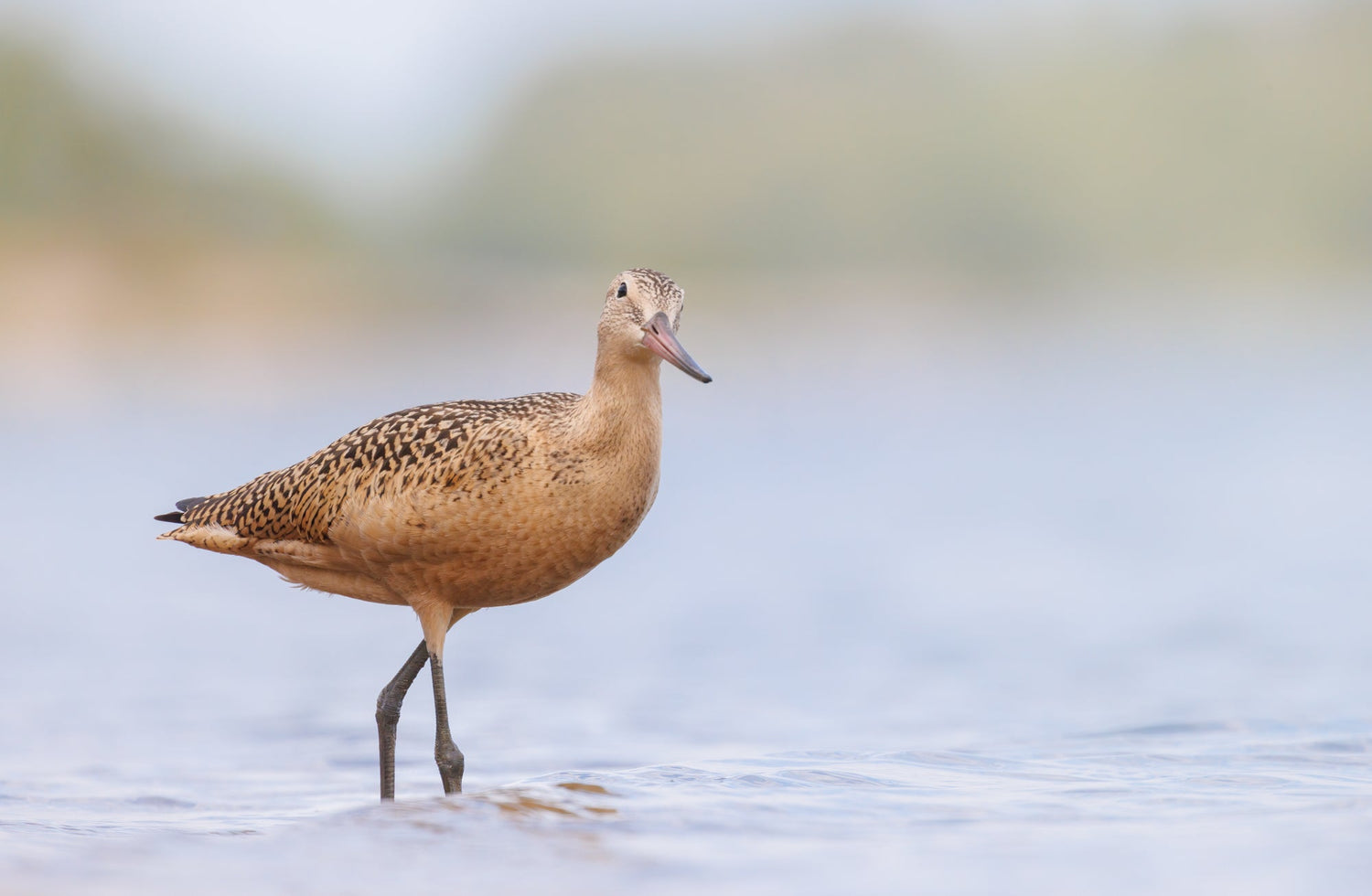
It's Piper Time: Photographing Migratory Sandpipers in Northern Alberta
A marbled godwit in shallow water
To everything there is a season and now is the time for pipers. I have stated before over 200 different bird species pass through the area where I live using the central flyway. Many of these sandpipers species are coming from the far north and arctic regions on route to their winter homes in the south. One of the major lakes in the area where I live is 20km by 29km wide, which makes for a LOT of shore, a perfect place to rest and recharge on a long journey.

A greater yellowleg at sunrise
This time of year is also perfect for light. Sunrise is around 6 am and sunset is about 9 pm. Not too early to get up and get out before sunrise and not so late that is near midnight when you get home, which is the case close to the summer solstice in Northern Alberta. The soft pinks and purples at this time make stunning photos as the birds walk along the shoreline and at times into the water.

A trio of greater yellowlegs at sunrise
Usually, through the summer months, killdeer and greater and lesser yellowlegs are easily found, but other piper species are not so common. Now until late September I can go to the lake and find a different species almost every day. From solitaire and Baird pipers to godwits and avocets you never know what you will find. Some of my most purchased and most published works are pipers at sunrise or sunset. There is such a sense of tranquility portrayed in these images. They provide a mental escape even if just momentarily for the viewer which makes them perfect for print sales.

A greater yellowleg in tranquil waters
To make the most of these few weeks here are some tips I have for photographing these lovely and delightful birds.
1. You can get close to these birds if you remain relatively still, so you can use a shorter lens that allows you to use a lower aperture and gather more light. As you want to get sunrise and sunset colors you will be in low light so have patience and wait for the birds to come to you, make sure you are shooting at least 1/640 shutter speed to minimize blur caused by the movement of the bird and if you can get higher without a crazy high ISO even better.
2. Get down in the sand. Lay in it and get eye level. I actually bring a yoga mat with me so I am not laying directly in the sand and it allows me to rest my camera on the mat and not have it in the sand which can cause damage.
3. If you have a mirrorless camera save your back and flip the viewfinder into a position that allows you to sit and watch the scene through the viewfinder. Often I have my camera on my mat with the viewfinder flipped out and can sit and enjoy the birds around me.
4. Minimize the background. Move the camera slightly if a plant or driftwood is in your background and distracting from your subject.
5. Get the water in the photo, not just the bird walking on the beach as you want the beautiful pinks and purples and even if you are lucky gold colors from the sun crossing the horizon. Huge bonus if you can get a reflection too!
6. Do not get up and move around a lot. The pipers tend to move up and down the shore, if they get out of range wait for them to come back to you. Lots of movement will most likely cause them to fly off.


